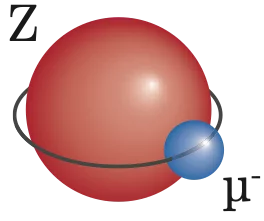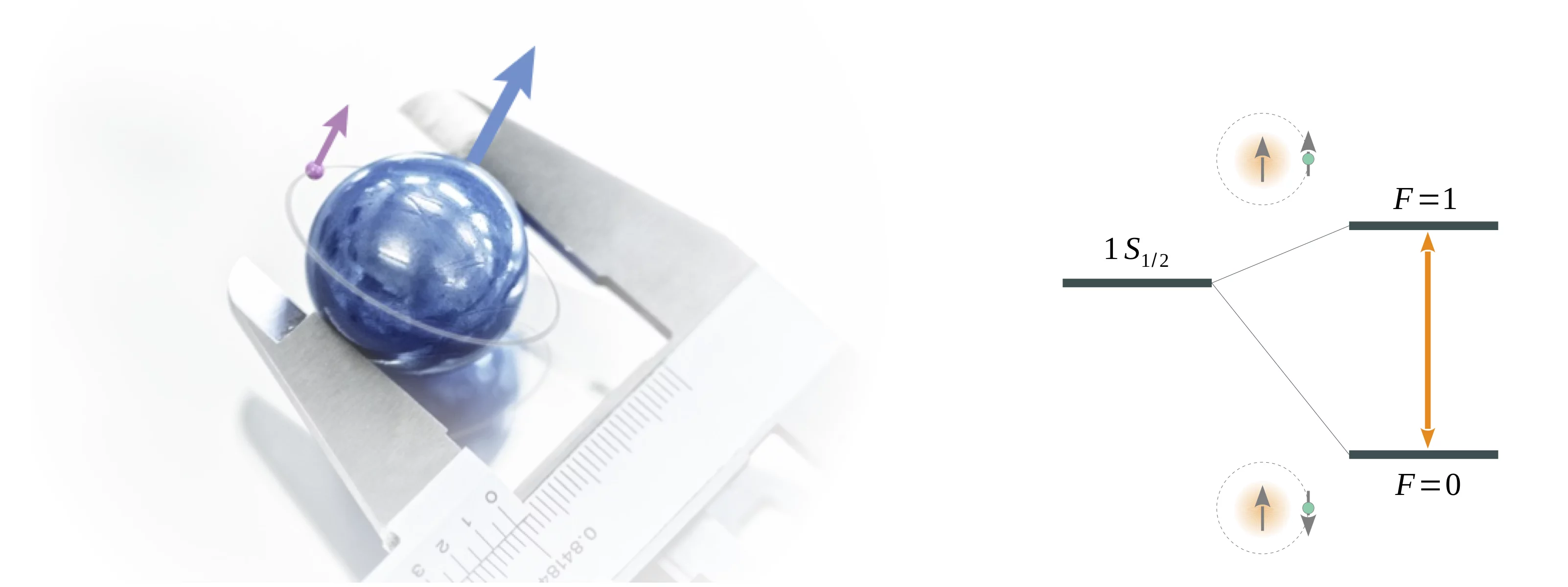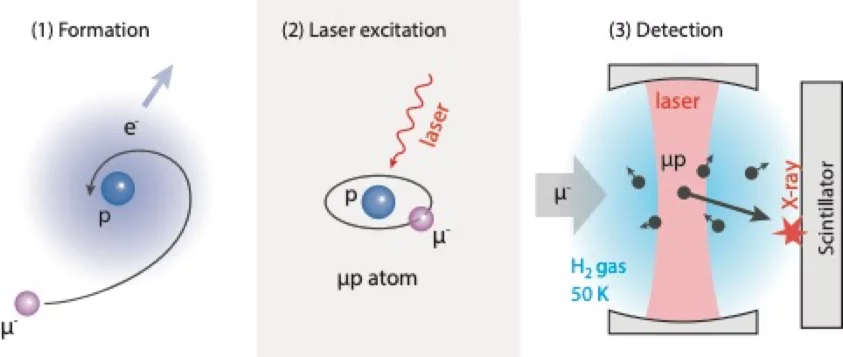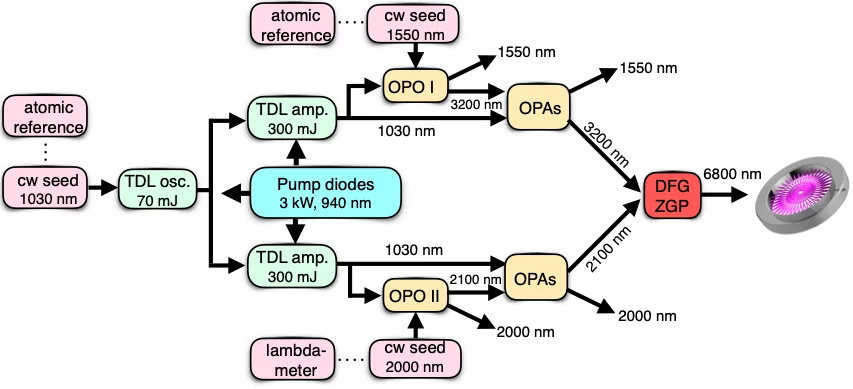Muonic atoms are hydrogen-like atomic bound systems formed by a negative muon and a nucleus. Because the muon mass is 200 times larger than the electron mass, the Bohr radius of the muonic atoms is 200 times smaller than the Bohr radius of the electrons in regular electronic atoms. This results in a considerable overlap between the muonic and the nuclear wave-functions causing shifts of the atomic energy levels. Highly accurate measurements of transition frequencies in muonic atoms by means of laser spectroscopy can be used thus as precise probes of low-energy properties of the nuclei.
The 2S-2P transition measurements in muonic hydrogen (μp) and muonic helium yielded precise values of the proton and helium nucleus charge radii, i.e., provided information on the charge distribution of the proton and helium nucleus [Nature466, 213 (2010), Science339, 417 (2013), Science353, 369 (2016)].
Differently, the hyperfine splitting (HFS) of μp, which arises from the interaction between the magnetic moment of the muon and the magnetic moment of the proton, carries information about the magnetic structure of the proton.
Our goal is to measure the ground state HFS in μp by means of pulsed laser spectroscopy with a relative accuracy of 1x10-6to deduce the two-photon exchange contribution (sum of Zeemach radius and polarizability contributions) with a relative accuracy of 1x10-4. This measurement has the potential to expose possible lepton flavor violations and will provide benchmarks for modelling the proton: for lattice QCD, chiral perturbation and dispersion-based theories.
This experiment at the crossover between particle, atomic and nuclear physics requires the development of cutting-edge laser technologies especially in the thin-disk laser and the mid-infrared laser domains. The thin-disk laser has become in the last decades a workhorse in the high-power industrial laser sector, while the field of mid-infrared laser sources has a number of applications including spectroscopy remote sensing and numerous bio-medical applications such as surgery. In this project, we focus on energy-scaling of these lasers while constraining them to operate in single-frequency mode with the potential of various technology transfer.
The experimental principle
In a nutshell our experiment works as follows: Low energy muons (μ− ) are stopped in a cryogenic H2gas target at 1 bar pressure, whereby μp atoms in highly excited states are formed. The highly excited μp atoms quickly de-excite to the F=0 (singlet state) of the ground state. A laser pulse induces the hyperfine transition from the lower lying singlet state F = 0 into the higher lying triplet state F=1 i.e.,
µp(F=0) + ɣ → µp(F=1) .
Shortly afterwards, the higher lying triplet state (F=1) is collisionally quenched back to the singlet state. In this process, the HFS transition energy is converted into kinetic energy.
µp(F=1) + H2→µp(F=0) + H2+ Ekin .
For a sufficiently small target, the faster moving laser-excited μp atoms reach the target walls coated with high-Z material. At the walls, the muontransfers from μp to a high-Z atom leading to the formation of a highly excited muonic high-Z atom (μZ)∗ which promptly de-excites emitting X-rays. A resonance curve is retrieved by plotting the number of emitted X-rays as a function of the laser frequency.
The experimental setup we are developing for this measurement consists of three main components:
- A laser system delivering pulses of 5 mJ at a wavelength of 6.8 μm and a bandwidth smaller than 100 MHz with a delay upon a stochastic trigger and emission of the pulse shorter than 1μs. This laser system rests upon two cutting-edge technologies: thin-disk lasers (TDL) and parametric down-conversion stages
- A multi-pass optical cavity enhancing the laser fluence and operating at cryogenic temperatures.
- A detection system that measures the muonic X-rays with high efficiency while supressing the background caused by electron from muon decay.
We offer
We are always happy to welcome new PhD and PostDoc members in our group! Even if you are early on in your studies but you would want to participate in a research project do not hesitate to contact us.
- Semesterarbeit
- Bachelor thesis
- Master thesis
- PhD positions
- PostDoc positions
Contact us
Dr. Aldo Antognini
ETH Zurich
Institute for Particle Physics and Astrophysics
HPK G28
Otto-Stern-Weg 5
CH-8093 Zurich
Paul Scherrer Institute PSI
Laboratory for Particle Physics
WBWA/131
CH-5232 Villigen PSI
Switzerland
+41 56 310 4614





